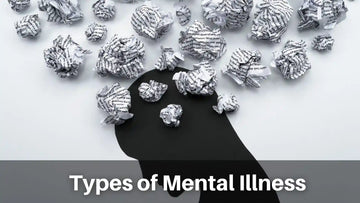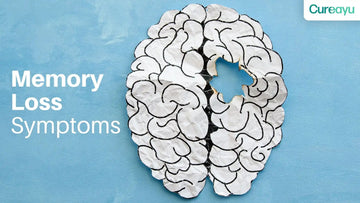In today's fast-paced world, mental health has become a crucial topic of conversation. With so many people affected by various mental health issues, understanding the different types of mental illness is more important than ever. Mental illnesses can affect anyone, regardless of age, gender, or background, and knowing the signs and symptoms can be the first step towards seeking help and finding effective treatments.
Mental health awareness has grown significantly in recent years, yet many people still struggle to understand the complexities of mental illnesses. This blog aims to shed light on some of the most common types of mental illness, their causes, and what can be done to help prevent them. By understanding these aspects, we can better support those who are struggling and help reduce the stigma surrounding mental health.
Also Read: Memory Loss Symptoms Uncovered: Causes, Types, and How to Combat Them
What Is Mental Illness?
Mental illness refers to a wide range of mental health conditions that affect an individual's mood, thinking, and behavior. These conditions can cause significant distress and impair one's ability to function normally in daily activities. Mental illnesses are surprisingly common, with millions of people around the world experiencing symptoms at some point in their lives.
Contrary to common misconceptions, mental illness is not a sign of weakness. It is a medical condition that requires proper treatment and care. Just like physical illnesses, mental health issues can be managed effectively with the right support, therapy, and medication. Recognizing the signs and seeking help early can make a significant difference in the recovery process.
Also Read: Top 10 Tips To Maintain Your Mental Health and Achieve Mind Stability Naturally
Types of Mental Illness
Anxiety Disorders
Anxiety disorders are characterized by excessive fear, worry, and nervousness. These emotions can be overwhelming and interfere with daily activities. Common anxiety disorders include generalized anxiety disorder (GAD), panic disorder, social anxiety disorder, and specific phobias.
Generalized anxiety disorder involves chronic and excessive worry about various aspects of life, such as work, health, and relationships. Panic disorder is marked by sudden and intense bouts of fear, known as panic attacks, which can be debilitating. Social anxiety disorder causes intense fear of social situations, leading to avoidance and isolation. Specific phobias involve intense fear of specific objects or situations, such as heights or spiders.
Mood Disorders
Mood disorders involve disturbances in a person's emotional state. The most common mood disorders are major depressive disorder and bipolar disorder. These conditions can result in extreme mood swings that impact one’s daily life.
Major depressive disorder, commonly known as depression, leads to persistent feelings of sadness, hopelessness, and a lack of interest in activities once enjoyed. Bipolar disorder involves alternating periods of depression and mania, a state of elevated mood, increased energy, and impulsive behavior. Both conditions can make it challenging to maintain relationships and perform well at work or school.
Psychotic Disorders
Psychotic disorders involve distorted thinking and awareness. The most well-known psychotic disorder is schizophrenia. Symptoms of psychotic disorders can include hallucinations, delusions, and disorganized thinking.
Hallucinations involve seeing or hearing things that are not present, while delusions are false beliefs that are strongly held despite evidence to the contrary. These symptoms can cause considerable distress and make it difficult for individuals to differentiate between reality and their perceptions. Treatment often involves a combination of medication and therapy to manage symptoms and improve quality of life.
Eating Disorders
Eating disorders are characterized by unhealthy preoccupations with food, body weight, and shape. Common eating disorders include anorexia nervosa, bulimia nervosa, and binge-eating disorder.
Anorexia nervosa involves extreme food restriction and an intense fear of gaining weight, leading to severe weight loss and malnutrition. Bulimia nervosa is marked by episodes of overeating followed by purging, such as vomiting or excessive exercise, to prevent weight gain. Binge-eating disorder involves consuming large quantities of food in a short period of time, often leading to feelings of guilt and shame. These disorders can have serious physical and emotional consequences if left untreated.
Personality Disorders
Personality disorders involve enduring patterns of behavior, cognition, and inner experience that deviate significantly from cultural expectations. These patterns are inflexible and pervasive, leading to distress and impairment. Common personality disorders include borderline personality disorder, antisocial personality disorder, and narcissistic personality disorder.
Borderline personality disorder is characterized by intense emotional instability, impulsive behavior, and difficulty maintaining relationships. Antisocial personality disorder involves a disregard for the rights of others, often leading to deceitful, manipulative, and criminal behavior. Narcissistic personality disorder is marked by an inflated sense of self-importance, a lack of empathy, and a constant need for admiration. Treatment often focuses on long-term psychotherapy to help individuals develop healthier behaviors and coping mechanisms.
Also Read: The Different Types of Mental Illness: Symptoms, Causes, and Treatment Options
Causes of Mental Illness
Biological Factors
Biological factors play a significant role in the development of mental illnesses. Genetic predisposition, brain chemistry, and hormonal imbalances can all contribute to the onset of mental health conditions. Individuals with a family history of mental illness are more likely to experience similar issues themselves.
Neurotransmitters, the chemicals in the brain that transmit signals between nerve cells, can also affect mood and behavior. Imbalances in these chemicals can lead to conditions such as depression and anxiety. Additionally, certain medical conditions and substance abuse can trigger or worsen mental health problems.
Psychological Factors
Psychological factors, such as trauma, abuse, and early life experiences, can have a profound impact on mental health. Individuals who have experienced traumatic events or chronic stress are at a higher risk of developing mental illnesses.
Cognitive patterns, such as negative thinking and poor coping skills, can also contribute to mental health issues. For example, persistent negative self-talk and irrational beliefs can increase the risk of depression and anxiety. Therapy can help individuals address and change these harmful thought patterns.
Environmental Factors
Environmental factors, including social, economic, and cultural influences, can significantly impact mental health. Factors such as poverty, unemployment, and lack of social support can increase the risk of mental illness.
Social isolation and loneliness are also important environmental factors that can lead to mental health problems. Additionally, exposure to violence, discrimination, and chronic stress can contribute to the development of mental health conditions.
Also Read: Refresh Your Mental Palette: Top 10 Ways to Achieve Mind Detox
Prevention Tips for Mental Illness
-
Maintain a Healthy Lifestyle: Regular exercise, a balanced diet, and adequate sleep can improve overall mental health. Physical activity releases endorphins, which can boost mood and reduce stress.
-
Develop Strong Social Connections: Building and maintaining healthy relationships can provide emotional support and reduce feelings of isolation and loneliness.
-
Practice Stress Management Techniques: Techniques such as mindfulness, meditation, and deep breathing exercises can help manage stress and improve resilience.
-
Seek Professional Help: Early intervention and treatment from a mental health professional can prevent the worsening of symptoms and improve outcomes.
-
Stay Informed: Educating yourself about mental health and being aware of the signs and symptoms of mental illness can help you seek help early and support others who may be struggling.
Final Words
Understanding the different types of mental illness and their causes is crucial for fostering a more compassionate and informed society. By recognizing the signs and providing support, we can help those affected by mental health conditions lead fulfilling and productive lives.
Mental health is an integral part of overall well-being, and it is essential to prioritize it just as we do with physical health. Remember, seeking help for mental health issues is a sign of strength, not weakness. Together, we can break the stigma and create a world where everyone feels empowered to take care of their mental health.











